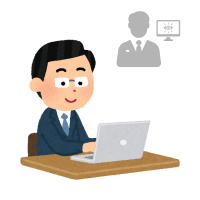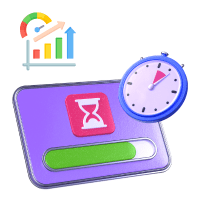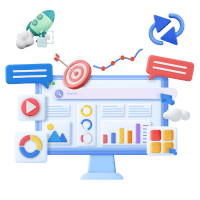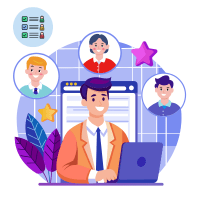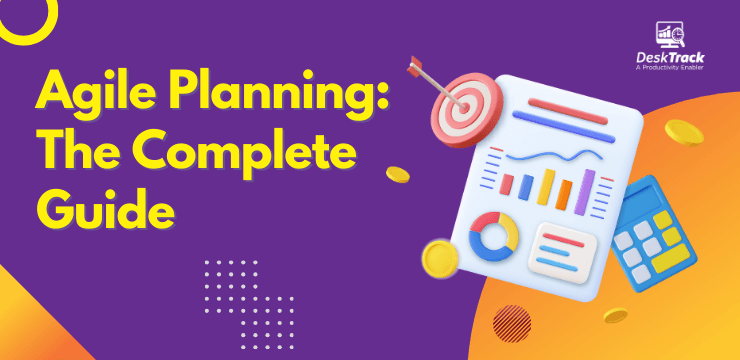
Agile planning is the present and the future. Businesses and organizations are adopting it and gaining many benefits. These include increased customer satisfaction, employee engagement, and streamlined operations. Plus, don’t forget the boost in collaboration and productivity. So, are you using this modern project planning and management method yet? If not, what are you waiting for?
Did you know that about 70% of businesses have adopted agile techniques? 60% of those organizations increased profits after doing so. So it’s high time that you start implementing this planning technique. If you want a step-by-step guide to agile, then don’t worry. We have got everything you need right here.
By the end of this blog, you will know what agile planning is and its characteristics. Plus, this follows with its 6 levels and the step-by-step process. Furthermore, we will also discuss the top 10 software to simplify this type of project management. With that being said, let’s dive right in.
An Overview of Agile Planning
The agile management planning approach is simple yet effective. It is unique because it uses an iterative and incremental method to handle projects. What makes this method better is that it allows requirement changes throughout, taking constant feedback from end users instead of using an in-depth plan from the start of the project. In short, adaptability and responsiveness are at the core of agile teams.
Agile planning allows for a project to be broken down into smaller, more manageable tasks. The goal is to have a defined image of a project’s vision. Overall, the plan is to have a clear idea of:
- The different aspects of a project’s task.
- Knowing how you will achieve them.
A few examples of agile methodology include:
- Roadmaps to a product’s release commercial schedule.
- Sprints for working on one task group at a time.
- Having a feedback plan allows your teams to stay flexible and easily adapt to changes.
- The project’s user stories (tasks) identify user needs from their perspective.
Agile Planning Characteristics

As we mentioned before, agile planning is different from traditional project planning. So, it also must have different characteristics. Moreover, implementing this methodology is essential to determining the success of the new project management format. However, before that, you must have a basic idea of its characteristics.
1. Releases and Sprints
What’s involved first in the agile technique is to have a release. When it comes to updating an existing product or making a new one, each release is divided into:
- Several iterations known as sprints.
- Each sprint has a fixed length, usually two weeks.
- The team has a list of predefined user stories to work on in each sprint.
2. User Stories-Based
As we mentioned before, agile planning focuses on meeting the end-user’s needs. Teams use user stories to work on the same. To give you an example, teams may work on a software product based on:
- It’s helpful for me as a team member to get notified of new tasks.
- When a task is stuck or is behind schedule, it would be great if I get emailed as a team leader. This allows me to ensure that my team stays on track.
Overall, with agile management planning, teams focus on documenting the user’s requirements.
3. Iterative and Incremental
Agile planning teams should remember that all sprints are of equal length. Plus, the team repeats the same process again and again for each sprint. Overall, each sprint produces working features, which we can show to end users. Furthermore, this type of process allows your teams to:
- Identify their capabilities.
- Estimate the number of user stories that can be worked on and finished within a timeframe.
- Find issues that are blocking them from progressing.
- Fix these problems in the upcoming sprints.
4. Collective Work Estimation Effort
Agile methodologies focus on estimating and planning through the collective efforts of teams. Thus, during the sprint phase, teams determine user story complexities to execute the plan, also known as a story point. Unactioned or points unassigned user stories on the current sprints go to the project backlog. For example:
- Assign 1 point to a simple story.
- 2-3 points to a moderately complex task.
- 4-5 points to bigger tasks based on the work understanding.
Read Also: Top 10 Best Habit Tracker Apps
6 Levels of Agile Planning
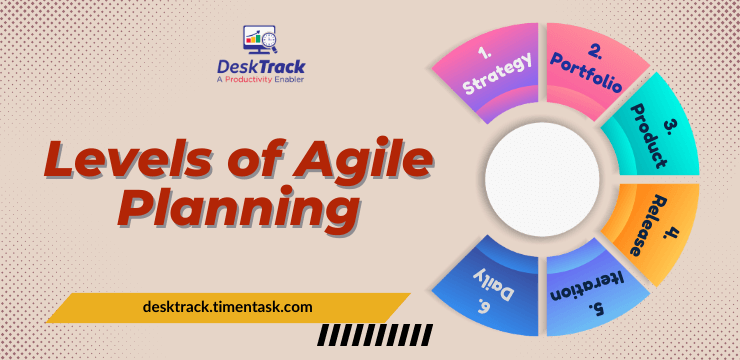
Understanding the steps of agile planning will be much simpler if we can wrap our heads around its 6 levels. These are strategy, portfolio, product, release, iteration, and daily. Overall, these technical terms may sound complex but are very simple.
1. Strategy
The first step to anything is creating a strategy. Agile techniques included. So, during the beginning of the project, businesses and organizations define their long-term visions. This involves identifying resources and skills to fulfill objectives.
2. Portfolio
The next stage in agile planning involves creating and maintaining products and project portfolios ensuring that resources are applied effectively. This includes:
- Prioritization
- Resource allocation
- Alignment with business objective
3. Product
The product planning phase of agile management planning involves:
- Teams setting overall product strategies.
- Fix a development approach.
- Decide:
- Themes
- Timelines
- Dates
- Assign Priorities to features to meet objectives and respond to market requirements.
4. Release
This stage of the agile methodology involves breaking down the roadmap into specific releases. This stage focuses on:
- The user stories to prioritize
- The timeline of each story
- Team capacities
- The features to deliver per release.
5. Iteration
This stage of agile planning is also known as iteration planning or sprint planning. Here, teams define the work they need to do in a sprint, which usually:
- Takes 1-4 weeks.
- Involves breaking down user stories into tasks.
- Estimates the needed effort.
6. Daily
The last layer of multi-level agile management planning involves daily stand-ups or scrum meetings. The idea here is to plan daily tasks and discuss progress, and impediments. What it does is help keep the teams on track and focused on the immediate tasks at hand.
Read Also: Business Management Software: The Complete Guide for 2024
Step-by-Step Agile Planning Process

Agile planning involves 8 steps and we will explain each of them in the simplest way possible. Remember that the core behind each step is to bring your project forward. Plus, it also maintains an organized approach to managing your product and workforce. Furthermore, what we like about this approach is that the steps can be adapted to your team’s particular requirements. However, some steps must be maintained on an ongoing basis. Sounds complex? It is not. So, let’s get started on how to bring your project to success. The agile way.
1. Vision Defining
The first step in agile management planning involves setting your vision for your product or project. Overall, it includes all the goals and objectives you need to achieve. Here, it is essential to align your vision with the user requirements and your business goals.
2. Setting Clear Expectations
The next step in agile planning is to bring your team and stakeholders on the same page. For this, all you have to do is simply set clear expectations regarding the expected output. Remember that these should remain constant even if tasks or specific plans change because of:
- Feedback cycles
- New iterations
3. Product Roadmapping
A good product roadmap gives your project a more strategic direction by highlighting milestones and deliverables. That’s what the next step of agile methodology planning is all about. The idea is to break down the roadmap into releases including a defined set of features.
4. Task Creation
The next step of agile planning is an ongoing process as the project and user requirements can alter at any point. However, the core should be to create actionable tasks based on real user stories. This allows team members to:
- Work on adding new features.
- Update existing features.
- Make the product more functional.
5. Product Backlogging
In the next step of our agile management planning process, we will create product backlogs. It’s again an ongoing step where you will collect the tasks and user stories, which you must work on during the project lifecycle. It includes:
- Tasks that are not a part of the current sprint but may be a part of future ones.
- They can act as a placeholder for collecting new tasks, arising as a result of:
- Feedback
- Roadblocks
- Problems
- Tasks in the backlog are prioritized as per user requirements and the project timeline.
6. Plan Iterations
Here, your agile planning process tells you to plan iterations for each release. For this process, you must:
- Define the goals and objectives for each sprint.
- Estimate the time and effort it may take to complete them based on the current iteration’s tasks.
- The above two points help you measure the sprint’s complexity to create an action plan based on:
- Current workloads
- Deliverables
- Timelines
7. Daily Stand-Ups
It’s an ongoing step of your agile technique planning. Daily meetings also known as stand-ups allow your teams to address any pressing issues and plan the day. Remember that these should be:
- Short and focused.
- Involving very short-term planning.
- Tackling a task being currently worked on.
8. Monitoring & Adapting
The last ongoing step of agile planning involves monitoring the progress against iteration plans, overall goals and objectives, and your product roadmap. This is your chance to track any deviations from the plan to find immediate solutions.
At the end of each iteration, identifying improvement areas and implementing them in future iterations is key. Here, and in all the 8 steps, using the right employee monitoring software can help simplify and automate the process.
How to Choose the Best Agile Planning Software?
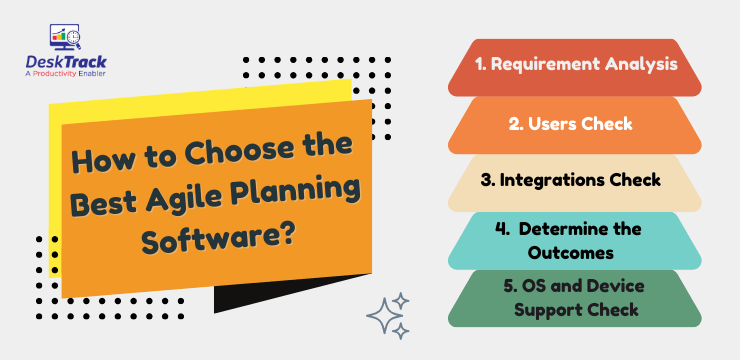
There are a few steps involved in choosing one of the best agile tools for your organization. Although they are very simple and basic, they can be time-consuming and overwhelming. However, if you have a dedicated expert team for such tasks, then, here’s what you should do.
1. Requirement Analysis
First things first. Before choosing your agile planning software, you need to determine the problems you are trying to solve. This step is crucial in determining the features and functionalities you need.
2. Users Check
Determine whether you need a large or small-scale agile methodology tool. It is important to evaluate the cost against your requirements. To do so, we recommend planning the number of users and the licenses you will need.
3. Integrations Check
Next, you will determine the tools and apps your agile planning software will replace. Plus, identifying the tools it needs to work with is also key to finding the best software. Also, you need to decide whether the applications will integrate altogether or alternatively.
4. Determine the Outcomes
What outcomes or results are you expecting from your tool for planning agile? The chosen software must give you that output for it to be a success. Otherwise, it will just be a waste of your valuable time and money. Fortunately, free trials and demos are always available.
5. OS and Device Support Check
The agile planning software you choose must also be compatible with the diverse operating systems and devices you use. Plus, the chosen solution must also be workable as per your workflows and delivery methodologies.
Top 10 Agile Planning Software
The process of making an agile plan involves a lot of scheduling, planning, and communicating to implement it with full effect. That’s why businesses and organizations use agile software tools, which you should too. Fortunately, you won’t have to go too far to look for the best options.
- DeskTrack
- monday dev
- Shortcut
- Quickbase
- Zoho Sprints
- Miro
- FigJam
- Kintone
- Trello
- Hubstaff
1. DeskTrack
DeskTrack is an employee monitoring and time tracking software, which is also the best for planning agile. It has collectively combined all the features you need in one platform to effectively execute your agile plans.
Key Features:
- Real-time tracking
- Real-time employee activity monitoring
- Automated task timer (s)
- Project and task management
- Intuitive dashboards
- Screenshot monitoring
- Reporting
- Data Analytics
- Seamless integrations
| Best For | Initial Pricing | User Rating |
| Best overall | $5.99/user/month | 5/5 |
2. monday dev
monday dev is an agile planning software for your development teams from monday.com. It’s a project management software, that makes it easy for your teams to handle agile frameworks including Scrum and Kanban.
Key Features:
- Advanced dependency tracking
- Time tracking
- Workload management tools
- Collaboration features
| Best For | Initial Pricing | User Rating |
| Development teams | $8/user/month | 4.7/5 |
3. Shortcut
There is no shortcut to success. However, there is one to make your agile plans. One of the best agile methodology tools for sprint and iteration management, Shortcut allows your teams to visually see their work and track progress in real-time.
Key Features:
- Roadmaps
- Customizable workflows
- Reporting
- Collaboration tools
- Planning and communication docs
- Objectives and goal settings
- APIs
| Best For | Initial Pricing | User Rating |
| Sprint and iteration management | $8.50/user/month | 4.3/5 |
4. Quickbase
This cloud-based agile planning software is one of the best for providing you with a no-code operational agility solution. What we like about Quickbase is that your teams can build, modify, and customize applications without extensive coding knowledge or dependency on IT development teams.
Key Features:
- Enterprise-grade security and compliance tools
- Mobile capabilities
- End-to-end visibility
- Workflow automation features
- AI capabilities
- Automation tools for repetitive tasks
| Best For | Initial Pricing | User Rating |
| No-code enterprise apps | $35/user/month | 4.4/5 |
5. Zoho Sprints
Zoho Sprints is the agile software tool you need for a plethora of robust dynamic planning and collaboration features, which are a must-have for your agile teams. What we like about it is the capability to visualize workflows and track progress with user-friendly time tracking prowess.
Key Features:
- Roadmapping
- Project management
- Task scheduling and tracking
- Customer management
- Prioritization
- Notifications
| Best For | Initial Pricing | User Rating |
| Agile project collaboration | $3/user/month | 4.1/5 |
6. Miro
Miro is the collaborative online whiteboard and project management software you need for visualizing your workflows. The software solution provides you with over 1000 templates such as mind maps, Kanban boards, Gantt charts, product wireframes, research boards, and flowcharts.
Key Features:
- Infinite canvas
- Templates
- Video conferencing
- Easy drag-and-drop interface
- Real-time collaboration
- Presentation mode
- Sticky notes
- Voting
- Comments
- Timer
- Screen sharing
| Best For | Initial Pricing | User Rating |
| Collaborative whiteboards and visualizations | $8/user/month | 4.8/5 |
7. FigJam
FigJam is one of the best agile planning software for online collaborative project brainstorming. Plus, it’s also great for strategic planning and diagramming. Plus, what we like about it is that all that is in real-time.
Key Features:
- Project management templates
- Audio and live chat
- Stamp and emoji react
- External collaborator access
- Calendar and timeline widgets
- Bitmoji avatars
- Music player
- Mobile app
| Best For | Initial Pricing | User Rating |
| Online collaborative project brainstorming | $15/full seat/month | 4.7/5 |
8. Kintone
Kintone is one of the popular tools for planning agile, which more than 23000 businesses worldwide use. Plus, you can make apps from either scratch or by using templates to speed up the process. Furthermore, its drag-and-drop builder is a convenient feature for easily making changes and improvements to your application as you build away.
Key Features:
- App library
- Enhanced process management
- Private Messaging
- Real-time custom graphs and charts
- Granular permission controls
| Best For | Initial Pricing | User Rating |
| Creating custom agile workflows | $24/user/month | 4.6/5 |
9. Trello
Simply put, Trello is one of the simplest yet powerful agile planning software on our list. What makes it unique is that it has the shortest learning curve, meaning that you can it up and running in the quickest time possible. Plus, it also provides a freemium version, which is great for freelancers and small businesses.
Key Features:
- Templates
- Automation
- Power-ups
- Dashboards
- Reporting
- A board view
| Best For | Initial Pricing | User Rating |
| Kanban boards and card-based task lists | $5/user/month | 4.4/5 |
10. Hubstaff
Hubstaff is primarily an employee productivity monitoring software, which is a good choice for planning your agile projects. Furthermore, the interface provides you with the feature to organize tasks in different stages.
Key Features:
- Screen capture
- Activity tracking
- GPS tracking
- Task management
- Collaboration
- Gantt charts
- Resource management
- Time tracking
- Budget tracking
- Reporting and analytics
- Mobile app
- Invoicing
- Third-party integrations
| Best For | Initial Pricing | User Rating |
| Free agile project management software | $4.99/user/month | 4.3/5 |
Conclusion
We hope that now you can wrap your heads around agile planning and the steps needed for it. Agile project management is the present and future. Compared to traditional planning, businesses that implement agile planners are gaining more benefits including more employee engagement, increased customer satisfaction, and streamlined operations. However, it’s a lengthy process involving various levels and a multitude of steps. Understanding these is the only way to succeed in agile. So, to simplify and automate the process, you need the right tool. However, what if you need more than just agile management software? DeskTrack provides you with all the employee monitoring, time tracking, and project management features you need in one platform. With its user-friendly interface, single-click automation, no learning curve, and seamless integrations, you are bound to take your productivity and profitability to new heights with the best software solution for all things employee activity tracking.
Frequently Asked Questions (FAQ)
Q. What is the Process of Making an Agile Plan?
Ans. To make an agile plan, you need to use these 8 steps.
- Vision Defining
- Setting Clear Expectations
- Product Roadmapping
- Task Creation
- Product Backlogging
- Plan Iterations
- Daily Stand-Ups
- Monitoring & Adapting
Q. What are the 6 Levels of Making an Agile Plan?
Ans. To make an agile plan, you need to understand these 6 levels that go into it.
- Strategy
- Portfolio
- Product
- Release
- Iteration
- Daily
Q. Which are the Common Agile Methodologies?
Ans. Out of all the agile methodologies, these 9 techniques are most commonly used by businesses worldwide.
- Kanban
- Scrum
- Feature-Driven Development (FDD)
- Behavior-Driven Development (BDD)
- Lean Development
- Adaptive Software Development (ASD)
- Crystal
- Extreme Programming (XP)
- Dynamic Systems Development Method (DSDM)
Q. What are Agile Management Planning Tools?
Ans. Simply put, a tool for planning agile is a feature-rich application, which allows businesses and organizations to simplify and automate their agile project practices. The tools or software solutions allow businesses to see their progress in real-time, and streamline workflow, and operations.
Q. Which are the Best Software Solutions for Agile Management Planning?
Ans. To help you choose the best option for your business, we shortlisted the top 10 agile planning software solutions.
- DeskTrack
- monday dev
- Shortcut
- Quickbase
- Zoho Sprints
- Miro
- FigJam
- Kintone
- Trello
- Hubstaff



